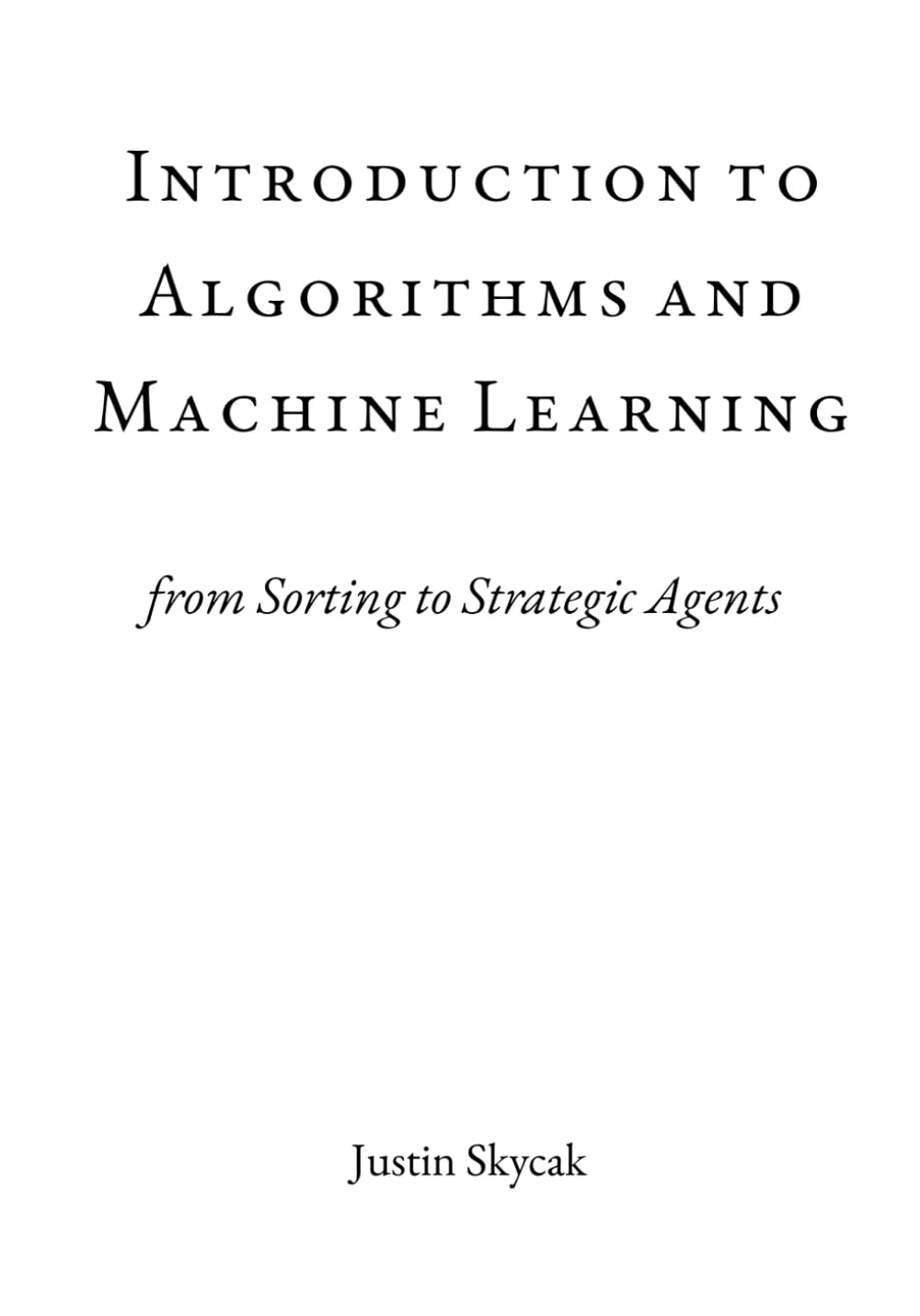Your cart is currently empty!
Tag: Strategic
The Walt Disney Co. Just Conducted a Master Class in Strategic Asset Management
It looks like the entertainment giant can have its proverbial cake and eat it too.
It’s official. The Walt Disney Company (DIS 0.53%) intends to become 70% owner of streaming television outfit (and cable alternative) FuboTV (FUBO -4.26%). Disney’s similar Hulu+Live service will, in turn, become part of FuboTV, although (for the time being anyway) the two brands will continue operating separately. Most notably, the deal also means Fubo will drop its efforts to prevent Walt Disney from co-launching a sports-centric streaming service in partnership with Fox and Warner Bros. Discovery — perhaps the ultimate goal of the negotiation.
Fubo will remain a publicly traded company, to be clear — Disney will simply be its biggest shareholder, buying yet-to-be-issued stock within the next year and a half.
On the surface, it seems like a win-win. And in many regards, it is. Walt Disney can proceed with the debut of its sports-minded Venu platform, while FuboTV shareholders can bask in the 250% gain their stock experienced immediately after the announcement was made Monday morning. Some are saying the development may well have saved the tiny company since it also calls for much-needed funding from The Walt Disney Company.
The deal arguably favors Disney far more than it favors Fubo, though, for reasons that are being obscured by all the post-announcement noise.
The Walt Disney Company isn’t buying — it’s setting the stage for a future sale
Although it was cheered by most, the agreement is actually a bit unusual in light of Disney’s other option. That’s the outright acquisition of Fubo, which, at the time the agreement was announced, sported a market cap of less than $500 million. Even a 100% premium to last Friday’s closing price would have still been affordable for deep-pocketed Disney, which has $6 billion worth of liquidity sitting on its balance sheet right now.
Disney is also no stranger to the cable television business; its Hulu+Live platform very similarly delivers live network broadcasts and other cable TV content to 4.6 million subscribers versus FuboTV’s more modest headcount of 1.6 million cable-alternative customers.
However, what if The Walt Disney Company doesn’t want to be in the cable television business any longer? What if the media giant would rather just focus on content creation and selling this content directly to consumers, bypassing the conventional cable industry?
That seems to be what Disney wants since that’s exactly what this deal does.
That’s not to suggest Walt Disney offloaded a lemon on Fubo at what will end up being a negligible cost. Hulu+Live is earnings before interest, taxes, depreciation, and amortization (EBITDA)-profitable, and the combination of this business with FuboTV’s similar cable alternative is expected to become even more profitable, operating under one umbrella. Perhaps Fubo will be able to do more with the well-recognized Hulu brand than Walt Disney ever managed to.
The cable business isn’t exactly high-growth, though. Indeed, streaming alternatives to cable TV are increasingly running into the same headwinds as conventional cable. These, of course, are rising carriage fees in an environment where consumers are enjoying an increasing number of live-streaming options, and now, the prospect of streaming cable-like television being regulated like ordinary cable TV.
In many ways, the Walt Disney Company arguably just abandoned a sinking ship. Underscoring its disinterest in the business is the fact that — despite being a majority owner — Disney is allowing FuboTV’s current management team to continue running the company.
To the extent that it still holds a stake in cable-like player FuboTV, it can afford to shed its 70% stake in the company at a loss at any point in the future. Even after the stock’s recent run-up, Fubo’s market cap remains less than $2 billion.
Live sports will soon be available in all flavors, sizes, colors, and price points
The irony? Walt Disney itself may be the chief reason matters are about to go from bad to worse for the cable television business.
It’s not the only reason consumers still pay sky-high monthly bills for cable TV, but according to numbers from CableTV.com, access to live sports is the top reason people are still paying for cable. Familiarity with how their cable TV service works is a close second reason. (The two reasons alone account for more than half of consumers’ willingness to stick with cable.)
Change is afoot on both fronts, however. Amazon Prime is now the exclusive carrier of Thursday nights’ NFL matchups, for instance. Even Netflix is venturing into this territory with the near-exclusive airing of two Christmas day games.
ESPN remains the powerhouse of the sports TV business, of course. The sports-focused cable channel remains a staple of all major cable television plans, offering programming that isn’t available anywhere else. Even that’s about to change, though. The now-impending launch of Venu will include all the live sports broadcasts from Warner’s TNT and TBS, Fox’s Fox Sports and FS1, and perhaps most notably, everything ESPN offers, including its flagship cable channel’s live broadcast.
If sports is indeed the chief reason people have yet to cut the cord, a wave of cord-cutting is building.
This wave will probably briefly reaccelerate later this year, too, by the way, when Disney plans to launch a stand-alone streaming version of ESPN that will even partially compete with Venu.
The Walt Disney Company no longer needs to care about the cable television industry’s ever-growing challenges. It’s now able to effectively monetize all of its big-ticket content in several other ways outside of cable’s reach.
Focus on the bigger, longer-term picture
So, now what? Presuming Fubo’s shareholders and regulators approve the deal, there’s nothing that shareholders of either company can or need to do. There’s a case to be made for taking action with both stocks, though.
For Walt Disney shares, the already-bullish case just became even more bullish.
Although the stock stumbled following news of the deal with FuboTV, this agreement solves a handful of near-term problems for Disney while also providing cost-effective choices further down the road. Namely, if it wants to get out of the streaming-cable business altogether, it can do so by selling the 70% stake in Fubo that it will soon be buying for little more than a song.
As for FuboTV, the stock’s recent surge may be an opportunity for a profitable exit — at least for part of any open positions.
While the agreement is more or less solidified, the one detail that’s missing so far is the price at which The Walt Disney Company is going to make its future purchase of its 70% stake in Fubo. It’s presumably going to reflect Fubo stock’s price nearer the time the deal closes, but there’s no particular contractual reason FuboTV shares are guaranteed to remain at their current lofty levels. Indeed, given that this week’s knee-jerk buying only unfurled based on the premise of the deal, there’s a good chance Fubo stock is poised to peel back at least a little bit in the near future.
The Walt Disney Co. Just Conducted a Master Class in Strategic Asset ManagementIn a bold move that has left industry analysts in awe, The Walt Disney Co. has just demonstrated a textbook example of strategic asset management. The entertainment giant recently announced a series of strategic decisions that have not only optimized their existing assets but also positioned them for future growth and success.
One of the key moves made by Disney was the acquisition of 21st Century Fox’s entertainment assets, a deal worth $71.3 billion. This merger not only expanded Disney’s already impressive portfolio of content but also allowed them to consolidate their position as one of the most dominant players in the entertainment industry.
In addition to this acquisition, Disney also made the strategic decision to launch their own streaming service, Disney+. This move not only allowed them to capitalize on the growing trend of cord-cutting and streaming services but also gave them greater control over the distribution of their content.
Furthermore, Disney has also made significant investments in their theme parks and resorts, with the opening of new attractions and the expansion of existing ones. This not only enhances the overall guest experience but also drives additional revenue for the company.
Overall, The Walt Disney Co. has demonstrated a keen understanding of their assets and how to leverage them for maximum value. By making strategic acquisitions, launching new services, and investing in their existing properties, Disney has set the standard for strategic asset management in the entertainment industry.
Tags:
Walt Disney Co, strategic asset management, Disney master class, asset management strategies, Disney company news, strategic planning, Disney business insights, asset management tips, corporate strategy, Disney success story, investment management.
#Walt #Disney #Conducted #Master #Class #Strategic #Asset #ManagementSolana, Litecoin, XRP gain $88B as Trump hints at Bitcoin strategic reserve
- Cryptocurrencies aggregate market capitalization consolidated at $3.5 trillion on Thursday rising by $152 billion within the last 24 hours.
- Altcoin markets (TOTAL3) rose by 9%, with the likes of Solana, Litecoin and XRP all posting double-digit gains.
- The two major bullish catalysts were positive speculation on 2025 ETF approvals and Donald Trump hinting at Bitcoin strategic reserve adoption.
Bitcoin Market Updates: BTC edges closer to $101K as ETFs end four-day selling frenzy
Bitcoin’s weak price rally attempt on Thursday halted at the $100,866 mark, as traders increasingly lean towards the altcoin markets.
Bitcoin ETFs Performance, January 15 2025 | Source: SosoValue
After four consecutive days of outflows, Bitcoin ETFs finally recorded $755 million inflows on Wednesday, hinting at a potential accumulation race ahead of Trump’s inauguration.
Altcoin market updates: XRP, Solana, and LTC lead $88B altcoin market rally
While Bitcoin price stalled below $101,000 on Thursday, the altcoin markets were agog with intense speculative trading activity.
 TOTAL3 (Cryptocurrency market cap excluding BTC and ETH) | Source: TradingView
TOTAL3 (Cryptocurrency market cap excluding BTC and ETH) | Source: TradingViewTradingView’s TOTAL3 represents the global cryptocurrency market cap growth, excluding Bitcoin and Ethereum. The chart above shows the altcoin market cap grew by $88 billion on Thursday, while BTC and ETH stagnated.
This emphasizes that the majority of crypto investors are currently switching focus toward altcoins, signaling high risk trading and speculative demand.
- XRP Surpasses $3, Reaching Seven-Year High
XRP’s price surged past the $3 mark, reaching $3.36, a 16% increase over the past 24 hours.
This rally is attributed to declining U.S. core inflation, increasing expectations for Federal Reserve interest rate cuts, and anticipation of new spot exchange-traded funds (ETFs) that would directly own cryptocurrencies. Additionally, positive developments in the SEC’s legal case against Ripple have bolstered investor confidence.
- Solana Targets $220 Amid Growing Interest
Solana (SOL) has experienced a notable price increase, currently trading at $210.25, with an intraday high of $216.36.
- Litecoin Jumps 16% in 24 Hours
Litecoin (LTC) price has surged past $130 for the first time in 2025, marking a 16% increase in the last 24 hours. This bullish breakout is linked to rising hopes that the Securities and Exchange Commission will approve a spot LTC ETF by Canary Capital. Bloomberg Senior ETF Analyst Eric Balchunas noted that the SEC had sent comments to Canary, suggesting a potential approval.
Chart of the day: Layer-1 Sector Surge 2% as Trader anticipate Altcoin ETFs
As speculation grows around the approval of altcoin ETFs, the Layer-1 sector has seen a 2% aggregate market cap increase. This surge comes amid reports from Bloomberg analysts highlighting the potential approval of Canary Capital’s Litecoin (LTC) ETF.
Notably Solana and XRP also have ongoing ETF application filings with US regulators. Investors are optimistic that these developments could open the floodgates for institutional adoption of other Layer-1 altcoins, sparking bullish sentiment across the market.
 Layer-1 Sector Performance | Source: SosoValue
Layer-1 Sector Performance | Source: SosoValueHedera (HBAR) led the sector’s growth with an impressive 22.65% daily increase to reach $0.38345. Based on recent reports HBAR rally is largely driven by growing institutional partnerships and scalable enterprise solutions. Cardano (ADA) climbed 4.60% to $1.095, showcasing resilience in the broader market rally. With a focus on scaling and decentralized governance, ADA continues to attract developer and retail interest.
Avalanche (AVAX) gained 2.65%, trading at $40.26, as its Subnets framework draws institutional interest in blockchain scaling solutions.
The approval of a Litecoin ETF could significantly impact the broader Layer-1 ecosystem, potentially creating a ripple effect for other tokens like Solana and XRP, which have also filed ETF applications. This domino effect could bring Layer-1 projects into mainstream financial products, further driving adoption and investment. As speculation builds, the Layer-1 sector remains at the forefront of market activity, with potential for more gains in the days ahead.
The potential approval of a Litecoin ETF represents a pivotal moment for the cryptocurrency market, with the possibility of creating a domino effect for other Layer-1 tokens. Solana, XRP, and other projects with active ETF filings could benefit significantly, as these products pave the way for greater accessibility and adoption in traditional financial markets. This optimism has fueled investor sentiment across the Layer-1 ecosystem, highlighting the growing anticipation for regulatory breakthroughs.Crypto News Updates:
- Phantom Wallet Raises $150 Million in Series C, Hits $3 Billion Valuation
Phantom Wallet has successfully raised $150 million in a Series C funding round, securing a $3 billion valuation.
The round was led by Sequoia Capital and Paradigm, with participation from a16z and Variant.
The funding highlights the increasing demand for digital wallets in the cryptocurrency space, with Phantom reporting 15 million monthly active users and $25 billion in self-custody assets under management.
- Senator Lummis Questions US Marshals Over Potential Bitcoin Sale
Wyoming Senator Cynthia Lummis has raised concerns with the US Marshals Service regarding the government’s potential sale of 69,370 Bitcoin seized from the Silk Road case.
In a letter, Lummis questioned how the sale aligns with plans to establish a national Bitcoin reserve, particularly amid the ongoing presidential transition.
The inquiry follows Judge Richard Seeborg’s recent decision to deny a petition aiming to block the forfeiture of the assets.
Lummis emphasized that selling the Bitcoin may undermine strategic reserve policies, highlighting the importance of preserving these assets for national interests.
- Oklahoma Introduces Bill to Use Bitcoin as Strategic Reserve Asset
Oklahoma state Representative Cody Maynard has introduced the Strategic Bitcoin Reserve Act, a bill that proposes allowing state pension funds and savings accounts to invest in Bitcoin.
The legislation positions Bitcoin as a hedge against inflation and a decentralized, non-governmental store of value, reflecting its growing role in institutional finance.
The bill underscores Bitcoin’s potential to protect state financial assets and aligns with similar legislative efforts across other US states.
This initiative aims to integrate Bitcoin into state-level financial strategies amid its increasing adoption in institutional and governmental contexts.
In a surprising turn of events, Solana, Litecoin, and XRP have seen a combined increase of $88 billion in market value following recent comments made by former President Donald Trump about potentially creating a strategic reserve of Bitcoin.Trump’s remarks, made during a recent interview, have sparked renewed interest in the cryptocurrency market, with investors flocking to altcoins like Solana, Litecoin, and XRP in search of potential gains.
Solana, known for its high-speed transactions and scalability, has seen a 20% increase in value, reaching an all-time high. Litecoin, often referred to as the “silver to Bitcoin’s gold,” has also experienced a significant price surge, gaining 15% in the past 24 hours. XRP, the digital asset used in Ripple’s payment protocol, has seen a 10% increase in value.
While the idea of a Bitcoin strategic reserve is still in its early stages, the potential implications for the cryptocurrency market are significant. As more mainstream figures like Trump express interest in Bitcoin and other digital assets, we can expect to see continued growth and adoption in the coming months.
Overall, the recent surge in value for Solana, Litecoin, and XRP is a clear indication of the growing interest and investment in the cryptocurrency market. With major players like Trump now entering the space, the future looks bright for digital assets.
Tags:
- Solana cryptocurrency
- Litecoin price surge
- XRP market analysis
- Trump Bitcoin reserve news
- Cryptocurrency market update
- Solana investment potential
- Litecoin value increase
- XRP market growth
- Trump crypto strategy
- Bitcoin reserve implications.
#Solana #Litecoin #XRP #gain #88B #Trump #hints #Bitcoin #strategic #reserve

Introduction to Algorithms and Machine Learning: from Sorting to Strategic Agents
Price: $13.68
(as of Jan 04,2025 09:25:51 UTC – Details)
ASIN : B0C4MRFFC4
Publisher : Independently published (May 8, 2023)
Language : English
Paperback : 424 pages
ISBN-13 : 979-8393911829
Item Weight : 2.01 pounds
Dimensions : 7 x 0.96 x 10 inches
Algorithms and machine learning have become integral parts of modern technology and are used in a myriad of applications, from sorting data to creating strategic agents in games. In this post, we will provide an introduction to these concepts and how they are interconnected.At the most basic level, algorithms are step-by-step procedures or formulas for solving a problem. They are used to process data, calculate results, and perform automated reasoning tasks. Sorting algorithms, for example, are used to arrange data in a specific order, such as alphabetically or numerically.
Machine learning, on the other hand, is a subset of artificial intelligence that focuses on developing algorithms that allow computers to learn from and make predictions or decisions based on data. These algorithms can be trained to recognize patterns, classify data, and make decisions without being explicitly programmed to do so.
One of the key connections between algorithms and machine learning is in the development of strategic agents. Strategic agents are autonomous entities that make decisions based on a set of rules or strategies. In games, for example, strategic agents use algorithms to evaluate the current state of the game, predict future outcomes, and make decisions to maximize their chances of winning.
By combining algorithms and machine learning, developers can create powerful tools and systems that can process vast amounts of data, make complex decisions, and adapt to changing environments. From sorting algorithms to strategic agents, the possibilities are endless when it comes to leveraging these technologies in various applications.
In future posts, we will delve deeper into specific algorithms, machine learning techniques, and practical applications of these concepts. Stay tuned for more insights on how algorithms and machine learning are shaping the future of technology.
#Introduction #Algorithms #Machine #Learning #Sorting #Strategic #Agents,machine learning: an applied mathematics introduction
Unlocking Secrets in the Cyberpunk Balatro Quest Location: A Strategic Approach
Cyberpunk 2077 has taken the gaming world by storm with its immersive open-world environment and engaging storyline. One of the most intriguing quests in the game is the Balatro quest, which challenges players to unlock a series of secrets hidden within the cyberpunk world.To successfully navigate the Balatro quest, players must adopt a strategic approach that involves careful exploration, problem-solving, and attention to detail. By following these tips, players can uncover the secrets hidden within the quest location and unlock valuable rewards.
First and foremost, exploration is key in the Balatro quest. Players should take the time to thoroughly explore the quest location, paying close attention to any clues or hints that may lead them to the hidden secrets. This may involve interacting with NPCs, searching for hidden items, or solving puzzles scattered throughout the area.
In addition to exploration, problem-solving is a crucial component of the Balatro quest. Players will encounter various challenges and obstacles that must be overcome in order to progress. This may include decoding encrypted messages, hacking into secure systems, or outsmarting enemy NPCs. By using their problem-solving skills, players can unlock the secrets hidden within the quest location and move one step closer to completing the quest.
Attention to detail is also essential in the Balatro quest. Players must carefully observe their surroundings and take note of any subtle clues that may indicate the location of hidden secrets. This may involve examining graffiti, deciphering cryptic messages, or analyzing the behavior of NPCs. By paying attention to detail, players can uncover the secrets of the Cyberpunk Balatro quest and reap the rewards that await them.
Overall, unlocking the secrets in the Cyberpunk Balatro quest location requires a strategic approach that involves exploration, problem-solving, and attention to detail. By following these tips, players can successfully navigate the quest and uncover the hidden secrets that lie within the cyberpunk world. So gear up, sharpen your skills, and embark on this thrilling quest to unlock the secrets of Cyberpunk 2077.
#Unlocking #Secrets #Cyberpunk #Balatro #Quest #Location #Strategic #Approach,cyberpunk balatro quest location
Nvidia’s Bet on Future Growth: A Look at the Company’s Strategic Initiatives
Nvidia, the leading graphics processing unit (GPU) manufacturer, has been at the forefront of technological innovation in recent years. Known for its cutting-edge graphics cards and processors, Nvidia has made significant investments in research and development to drive future growth and maintain its competitive edge in the rapidly evolving technology industry.One of Nvidia’s key strategic initiatives is its focus on artificial intelligence (AI) and machine learning. The company has been investing heavily in developing AI technologies and software solutions that leverage its powerful GPUs to accelerate deep learning algorithms. These initiatives have enabled Nvidia to establish itself as a leader in the AI space, providing solutions for various industries such as healthcare, automotive, and finance.
In addition to AI, Nvidia has also been expanding its presence in the gaming and data center markets. The company’s gaming GPUs are widely popular among gamers and have helped Nvidia maintain its dominant position in the gaming industry. Nvidia’s data center business, on the other hand, has seen rapid growth as more companies adopt AI and high-performance computing solutions for their operations.
Furthermore, Nvidia has been actively pursuing partnerships and acquisitions to further strengthen its position in the market. The company acquired Mellanox Technologies in 2019, a leading provider of high-performance networking solutions, to enhance its data center offerings. Nvidia has also partnered with major cloud providers such as Amazon Web Services and Microsoft Azure to bring its AI and GPU solutions to a wider audience.
Looking ahead, Nvidia’s bet on future growth seems to be paying off. The company’s focus on AI, gaming, and data center markets, coupled with its strategic partnerships and acquisitions, has positioned it for continued success in the years to come. As technology continues to advance at a rapid pace, Nvidia’s commitment to innovation and investment in key growth areas will undoubtedly drive its growth and success in the future.
#Nvidias #Bet #Future #Growth #Companys #Strategic #Initiatives,nvidia bets future growth
Strategic Insights: Leveraging Hybrid and Multi-Cloud Strategies for Business Growth
In today’s fast-paced business environment, companies are constantly looking for ways to stay ahead of the competition and drive growth. One strategy that has gained traction in recent years is leveraging hybrid and multi-cloud strategies. These strategies involve using a combination of public and private cloud services to optimize performance, cost, and flexibility.Hybrid cloud refers to the use of both on-premises infrastructure and cloud services, while multi-cloud involves using multiple cloud providers to host different workloads. By adopting these strategies, businesses can benefit from increased scalability, improved security, and better performance.
One of the key advantages of hybrid and multi-cloud strategies is the ability to tailor the cloud environment to meet specific business needs. For example, companies can use public cloud services for data storage and processing, while keeping sensitive information on private cloud servers. This flexibility allows businesses to optimize their resources and ensure that critical data is protected.
Additionally, leveraging multiple cloud providers can help mitigate the risk of downtime and data loss. By spreading workloads across different platforms, businesses can reduce the impact of service disruptions and ensure continuity of operations. This redundancy also provides a level of insurance against vendor lock-in, as companies are not reliant on a single provider for their cloud services.
Cost optimization is another key benefit of hybrid and multi-cloud strategies. By using a mix of public and private cloud services, businesses can better manage their IT expenses and avoid overpaying for unnecessary resources. This can result in significant cost savings over time, allowing companies to allocate resources more efficiently and invest in other areas of their business.
In conclusion, leveraging hybrid and multi-cloud strategies can be a game-changer for businesses looking to drive growth and stay competitive in today’s digital landscape. By combining the strengths of different cloud environments, companies can achieve greater flexibility, scalability, and cost efficiency. As technology continues to evolve, embracing these strategies will be essential for businesses looking to thrive in the digital age.
#Strategic #Insights #Leveraging #Hybrid #MultiCloud #Strategies #Business #Growth,enterprise-grade hybrid and multi-cloud strategies
Riding the Wave: NVIDIA’s Strategic Investments for Future Growth
NVIDIA, a global leader in visual computing technologies, has been on a growth trajectory in recent years, thanks to its strategic investments in key areas such as artificial intelligence, gaming, and autonomous vehicles. These investments have positioned the company for future growth and success in a rapidly evolving tech landscape.One of NVIDIA’s biggest bets has been on artificial intelligence (AI). The company has been at the forefront of developing AI technologies that power everything from self-driving cars to healthcare applications. NVIDIA’s GPUs (graphics processing units) are widely used in AI training and inference, making them a crucial component in the development of AI applications. As AI continues to revolutionize industries across the board, NVIDIA’s investment in this area has positioned it as a key player in the AI ecosystem.
In the gaming space, NVIDIA has also made strategic investments to stay ahead of the competition. The company’s GeForce GPUs are a popular choice among gamers for their high-performance capabilities and cutting-edge features. With the rise of eSports and the increasing demand for high-quality gaming experiences, NVIDIA’s focus on gaming technology has paid off, driving growth in its gaming segment.
Another area where NVIDIA has made significant investments is in autonomous vehicles. The company’s DRIVE platform is used by leading automakers and tech companies to develop self-driving cars and other autonomous vehicles. NVIDIA’s technology powers everything from advanced driver assistance systems to fully autonomous vehicles, making it a key player in the future of transportation.
Overall, NVIDIA’s strategic investments have positioned the company for continued growth and success in the years to come. By focusing on key areas such as AI, gaming, and autonomous vehicles, NVIDIA has established itself as a leader in these fast-growing markets. As technology continues to evolve at a rapid pace, NVIDIA’s forward-thinking approach and commitment to innovation will likely continue to drive its growth and success in the future.
#Riding #Wave #NVIDIAs #Strategic #Investments #Future #Growth,nvidia bets to future growth
Nvidia’s Strategic Investments: A Recipe for Future Success
Nvidia, the renowned technology company known for its cutting-edge graphics processing units (GPUs), has been making strategic investments in various areas to ensure its future success. These investments have not only helped the company stay ahead of its competitors but also positioned it as a leader in the rapidly evolving tech industry.One of Nvidia’s key strategic investments has been in the field of artificial intelligence (AI). The company has been at the forefront of developing AI technologies and has made significant investments in research and development to push the boundaries of what is possible with AI. Nvidia’s GPUs are widely used in AI applications, such as deep learning and machine learning, making them a crucial component in the advancement of AI technologies.
In addition to AI, Nvidia has also been investing in autonomous driving technology. The company’s GPUs are used in many autonomous vehicles to process large amounts of data in real-time, helping them navigate and make decisions on the road. Nvidia’s investment in autonomous driving technology has positioned it as a key player in the development of self-driving cars, a market that is expected to grow significantly in the coming years.
Furthermore, Nvidia has been making strategic investments in the gaming industry, a sector that has been a core part of its business for many years. The company has been developing new technologies to enhance gaming experiences, such as ray tracing and virtual reality, and has been partnering with game developers to bring these technologies to market. These investments have helped Nvidia maintain its dominance in the gaming industry and attract new customers to its products.
Overall, Nvidia’s strategic investments have been a recipe for future success. By focusing on key areas such as AI, autonomous driving, and gaming, the company has positioned itself as a leader in these rapidly growing markets. With its cutting-edge technologies and innovative solutions, Nvidia is well-positioned to continue its success in the tech industry for years to come.
#Nvidias #Strategic #Investments #Recipe #Future #Success,nvidia bets future growth
Strategic Data Center Management: Lessons Learned from a Case Study
The management of data centers is a critical aspect of ensuring the smooth operation of an organization’s IT infrastructure. With the increasing reliance on digital technology, data centers have become the nerve center of many businesses, housing valuable information and critical systems. As such, it is essential for organizations to adopt a strategic approach to data center management to ensure efficiency, reliability, and security.One way to gain insights into effective data center management practices is to study real-world case studies. By examining successful data center management initiatives, organizations can learn valuable lessons that can be applied to their own operations. In this article, we will discuss key takeaways from a case study on strategic data center management.
The case study in question involves a large financial services company that was facing challenges with its data center operations. The company’s data center was experiencing frequent outages, leading to downtime and disruptions in service. In addition, the data center was operating at full capacity, making it difficult to scale up to meet growing business demands.
To address these issues, the company implemented a strategic data center management plan. The plan included several key initiatives, including:
1. Infrastructure optimization: The company conducted a thorough assessment of its data center infrastructure to identify areas for improvement. This included upgrading outdated equipment, optimizing cooling systems, and implementing virtualization technologies to maximize resource utilization.
2. Disaster recovery planning: The company developed a comprehensive disaster recovery plan to ensure business continuity in the event of a data center outage. This included regular backups, redundant systems, and failover mechanisms to minimize downtime and data loss.
3. Capacity planning: The company implemented a proactive approach to capacity planning, forecasting future demand and scaling up resources accordingly. This helped prevent overloading of the data center and ensured smooth operations even during peak usage periods.
4. Security enhancements: The company enhanced its data center security measures to protect against cyber threats and unauthorized access. This included implementing firewalls, encryption technologies, and access controls to safeguard sensitive information.
By implementing these initiatives, the financial services company was able to improve the efficiency, reliability, and security of its data center operations. The company experienced fewer outages, reduced downtime, and increased scalability to support its growing business needs.
Key lessons learned from this case study include the importance of proactive planning, infrastructure optimization, disaster recovery preparedness, capacity planning, and security enhancements in effective data center management. By adopting a strategic approach to data center management, organizations can ensure the smooth operation of their IT infrastructure and support their business goals.
In conclusion, strategic data center management is essential for ensuring the efficiency and reliability of an organization’s IT operations. By studying successful case studies and learning from the experiences of others, organizations can gain valuable insights into best practices for managing data centers effectively. By implementing proactive planning, infrastructure optimization, disaster recovery preparedness, capacity planning, and security enhancements, organizations can optimize their data center operations and support their business objectives.
#Strategic #Data #Center #Management #Lessons #Learned #Case #Study,case study on data center management strategies
IT Office 2025: Explore Over a Year of Productivity and Collaboration in the Tech World, Ideal for Strategic Planning in Large Size
Price: $13.79
(as of Dec 29,2024 20:22:51 UTC – Details)
ASIN : B0DL9WKD9J
Publisher : Independently published (October 12, 2024)
Language : English
Paperback : 34 pages
Item Weight : 4.2 ounces
Dimensions : 8.5 x 0.08 x 8.5 inches
EnterprisesAs we look towards the future of technology and innovation, it’s crucial for IT offices to stay ahead of the curve in order to maximize productivity and collaboration within their organizations. With the rapid pace of technological advancements, it can be challenging to predict what the IT office landscape will look like in 2025. However, by exploring trends and developments over the past year, we can gain valuable insights into what the future may hold.
In this post, we’ll delve into key trends and developments that have shaped the IT office environment in recent years, and how they will impact strategic planning for large enterprises in 2025. From the rise of remote work and the increasing importance of cybersecurity, to the growing demand for cloud-based solutions and the integration of artificial intelligence, there are a multitude of factors that IT offices must consider as they plan for the future.
By examining these trends and developments, IT leaders can gain a better understanding of the challenges and opportunities that lie ahead, and develop strategies to ensure that their organizations remain competitive and innovative in the ever-evolving tech world. So let’s take a closer look at the IT office of 2025, and explore how you can prepare your organization for success in the years to come.
#Office #Explore #Year #Productivity #Collaboration #Tech #World #Ideal #Strategic #Planning #Large #Size,the year in tech 2025

